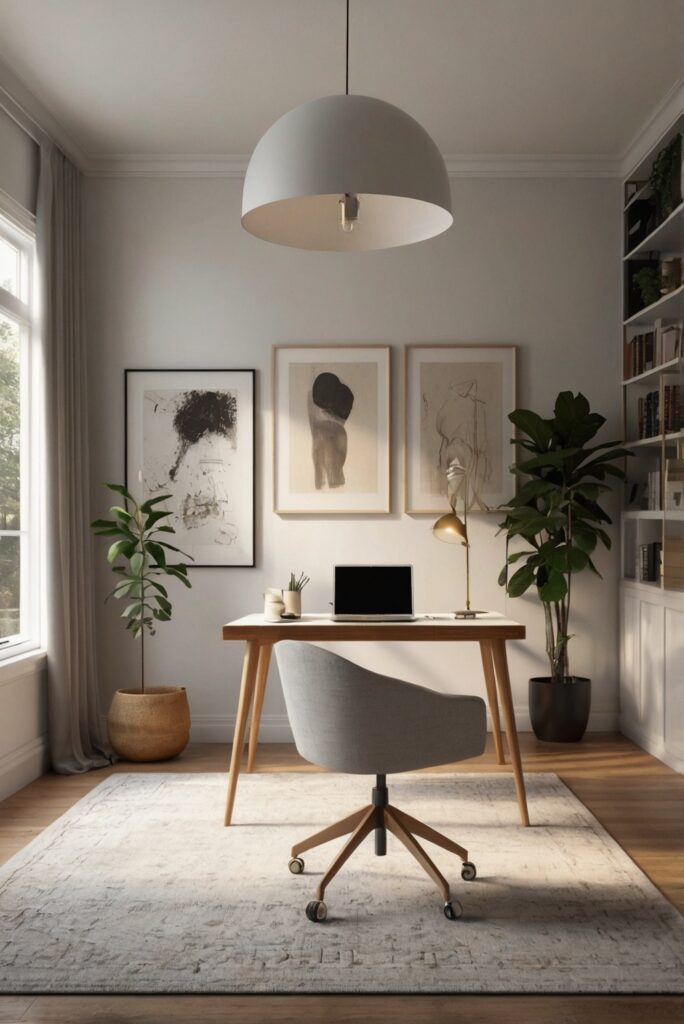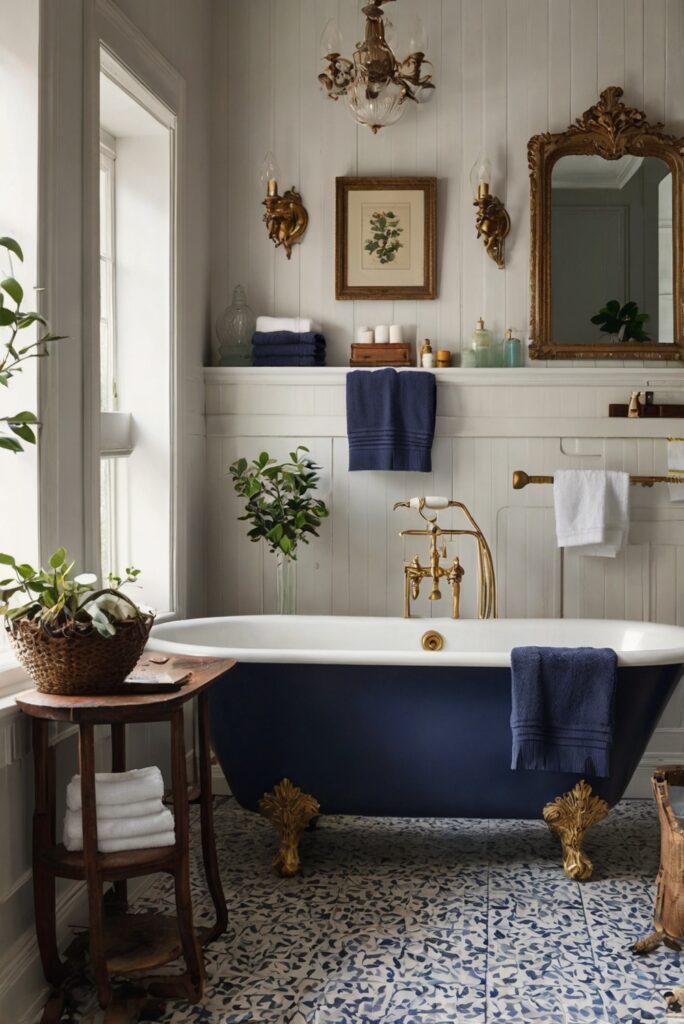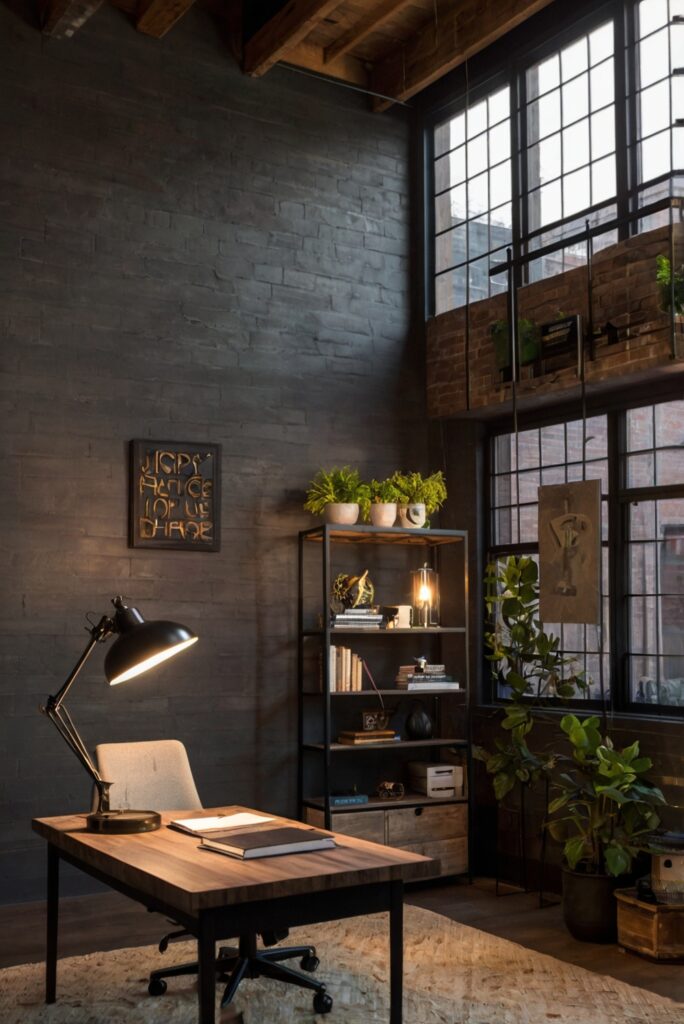Elevate your home office ambiance with the perfect lighting. Discover pro tips and stunning decor inspiration for a productive and stylish work space.
How to Choose the Best Lighting for Your Home Office?
Choosing the right lighting for your home office is essential for creating a productive and comfortable workspace. Consider natural light, task lighting, and ambient lighting to create a well-lit environment. Natural light is ideal for boosting mood and productivity, so position your desk near a window if possible. Task lighting, such as a desk lamp or overhead light, is crucial for focused work. Ambient lighting, like ceiling lights or wall sconces, can provide overall illumination. Consider using energy-efficient LED bulbs for cost savings. Remember to match the lighting to your decor and personal style to create a cohesive look in your home office.
Importance of Lighting in a Home Office:
Choosing the right lighting for your home office is crucial as it can significantly impact your productivity and well-being. Proper lighting can reduce eye strain, increase focus, and create a conducive work environment. Inadequate lighting can lead to headaches, fatigue, and decreased productivity. Therefore, it is essential to carefully consider the lighting options for your home office.
Types of Lighting:
There are three main types of lighting to consider for your home office: ambient lighting, task lighting, and accent lighting. Ambient lighting provides overall illumination for the room, task lighting is focused on specific work areas, and accent lighting adds style and visual interest. A combination of these three types of lighting can create a well-lit and functional workspace.
Points to Consider When Choosing Lighting:
When selecting lighting for your home office, consider factors such as the size of the room, the type of work you do, and your personal preferences. Make sure to choose lighting fixtures that complement the decor of your office and provide sufficient brightness for your tasks. Additionally, consider energy-efficient options such as LED bulbs to reduce electricity costs and environmental impact.
Factors to Consider When Choosing Lighting Fixtures:
When choosing lighting fixtures for your home office, consider factors such as the brightness level, color temperature, and flexibility of the fixtures. Opt for fixtures that allow you to adjust the brightness and direction of the light to suit your needs. Consider the placement of the fixtures to minimize glare and shadows, which can cause eye strain and discomfort.
Conclusion:
In conclusion, selecting the best lighting for your home office is essential for creating a productive and comfortable work environment. By considering the different types of lighting, the points to keep in mind when choosing lighting, and the factors to consider when selecting lighting fixtures, you can create a well-lit and functional workspace. Remember to prioritize your comfort and productivity when choosing lighting for your home office.
What are the key factors to consider when choosing lighting for your home office?
When selecting lighting for your home office, it is crucial to consider factors such as task lighting, ambient lighting, color temperature, and energy efficiency. Task lighting ensures adequate illumination for reading and working, while ambient lighting creates a comfortable atmosphere. Color temperature affects the mood and productivity levels, with cooler hues promoting focus and warmer tones creating a cozy feel. Opting for energy-efficient lighting not only saves on electricity bills but also reduces environmental impact.
How can natural light be incorporated into your home office lighting design?
Integrating natural light into your home office lighting design is essential for creating a vibrant and inspiring workspace. Position your desk near a window to maximize natural light exposure. Use sheer curtains or blinds to control glare and prevent distractions. Consider adding skylights or light tubes for additional natural light sources. Natural light not only enhances the overall aesthetic of your home office but also contributes to your well-being and productivity.
Why is task lighting important in a home office?
Task lighting is crucial in a home office as it provides focused illumination for specific work activities. Proper task lighting reduces eye strain, enhances concentration, and improves productivity. Desk lamps, under cabinet lights, and adjustable floor lamps are excellent options for task lighting in a home office. By strategically placing task lights in your workspace, you can create a well-lit environment that supports your daily tasks and promotes efficiency.
How can you determine the ideal lighting fixtures for your home office?
When selecting lighting fixtures for your home office, consider factors such as the size and layout of the space, the type of work you do, and your personal preferences. LED desk lamps are energy-efficient and offer customizable brightness levels, making them ideal for task lighting. Pendant lights and track lighting can provide ambient illumination while adding a decorative touch to your workspace. Evaluate the functionality and aesthetics of different lighting fixtures to choose the ones that best suit your home office needs.
What are some common lighting mistakes to avoid when designing your home office?
Avoiding common lighting mistakes is essential to create a well-lit and comfortable home office environment. Some mistakes to avoid include using harsh overhead lighting that causes glare and shadows, neglecting natural light sources, and choosing lighting fixtures that are too bright or too dim for the space. Additionally, failing to incorporate task lighting or using mismatched light bulbs can lead to visual discomfort and reduced productivity. By being mindful of these common lighting errors, you can design a home office that is both visually appealing and functional.



